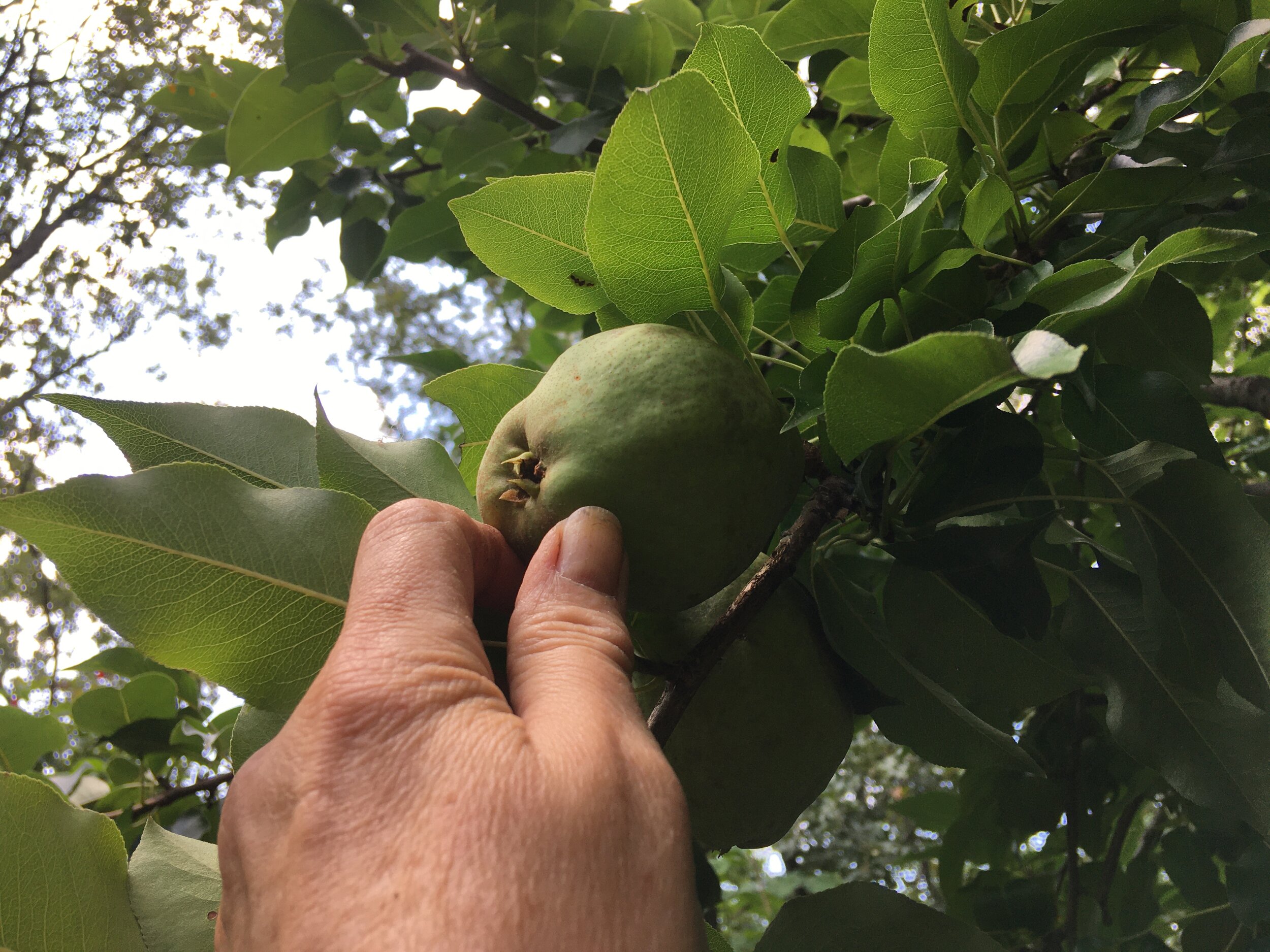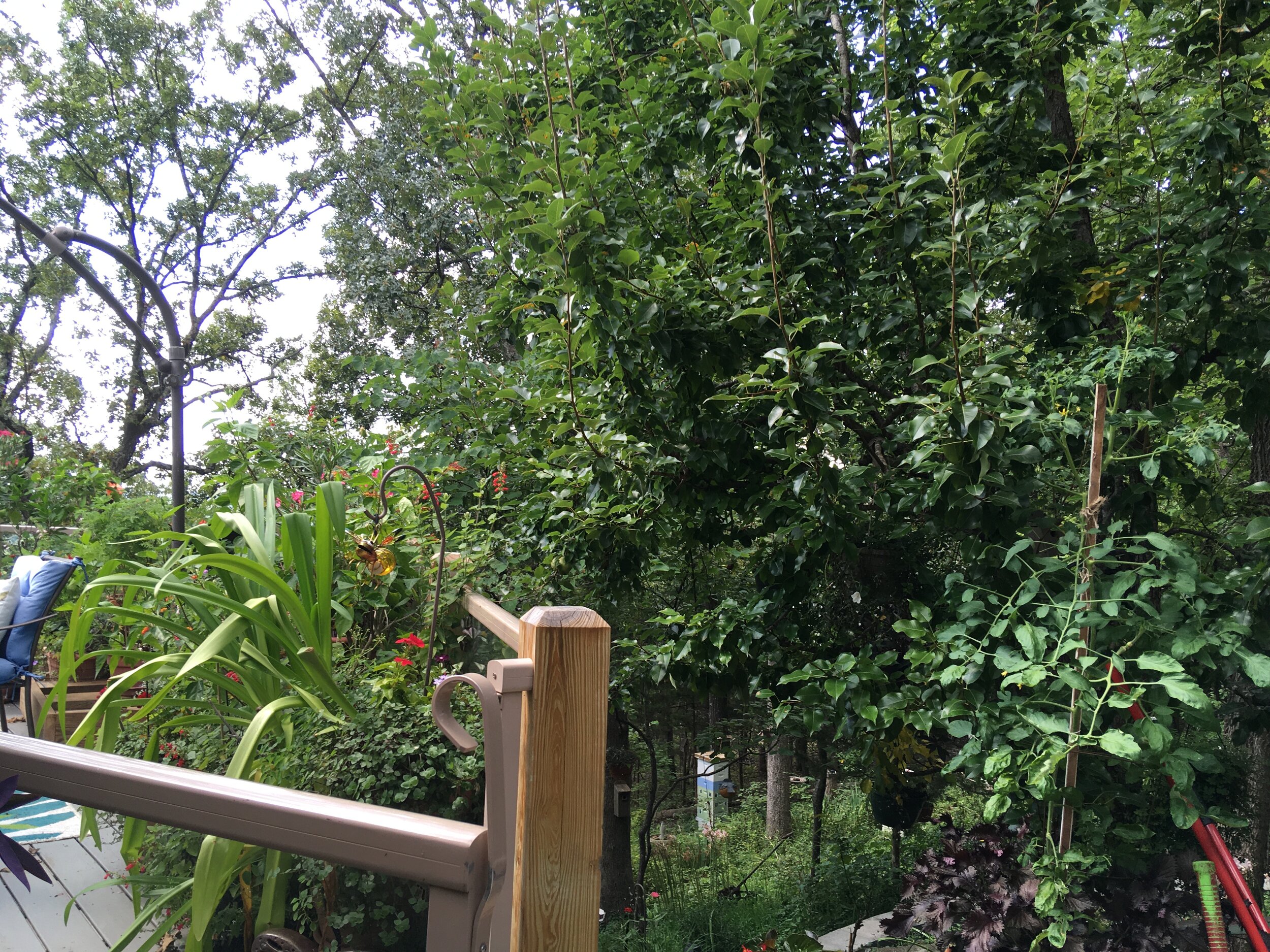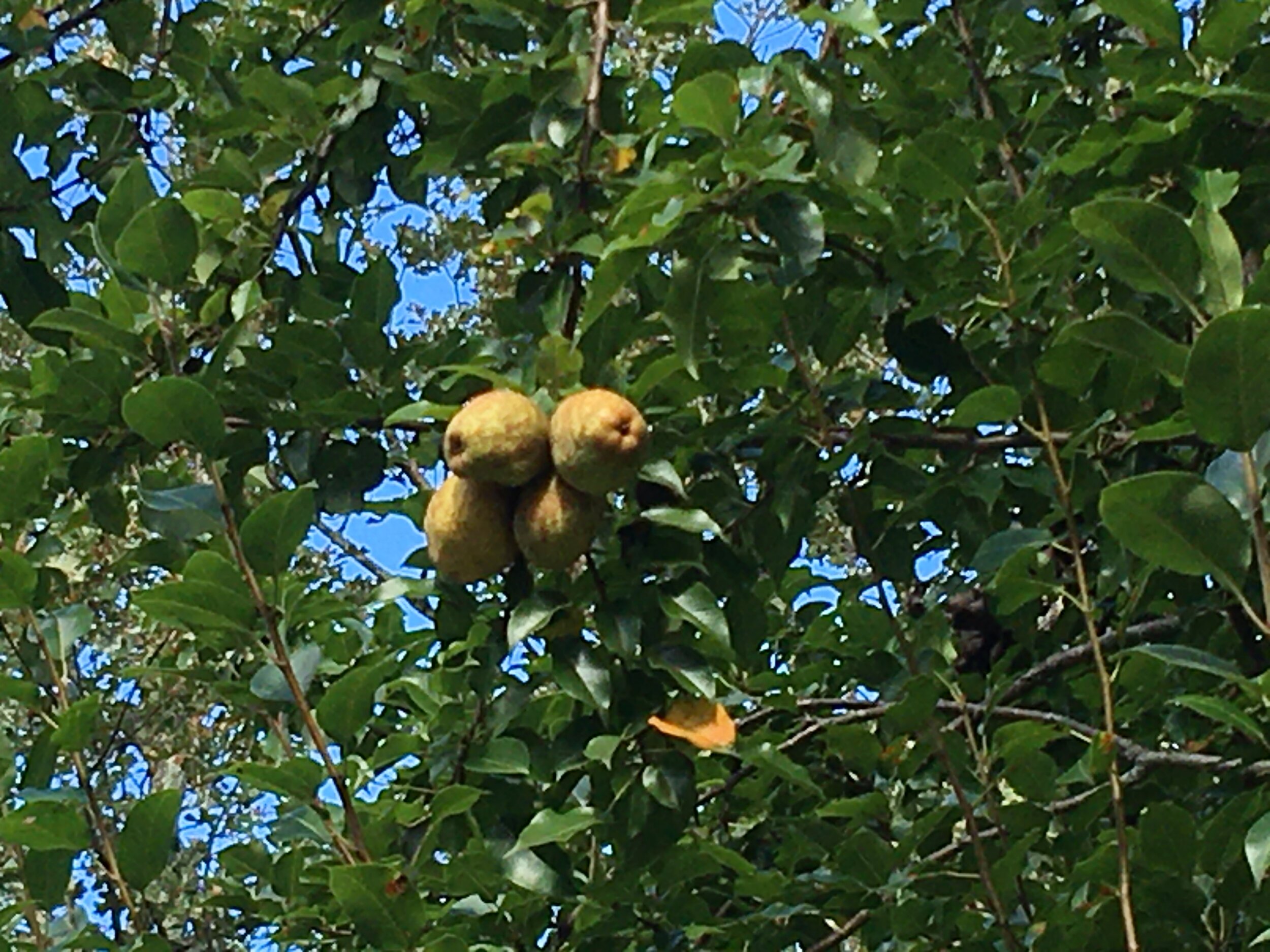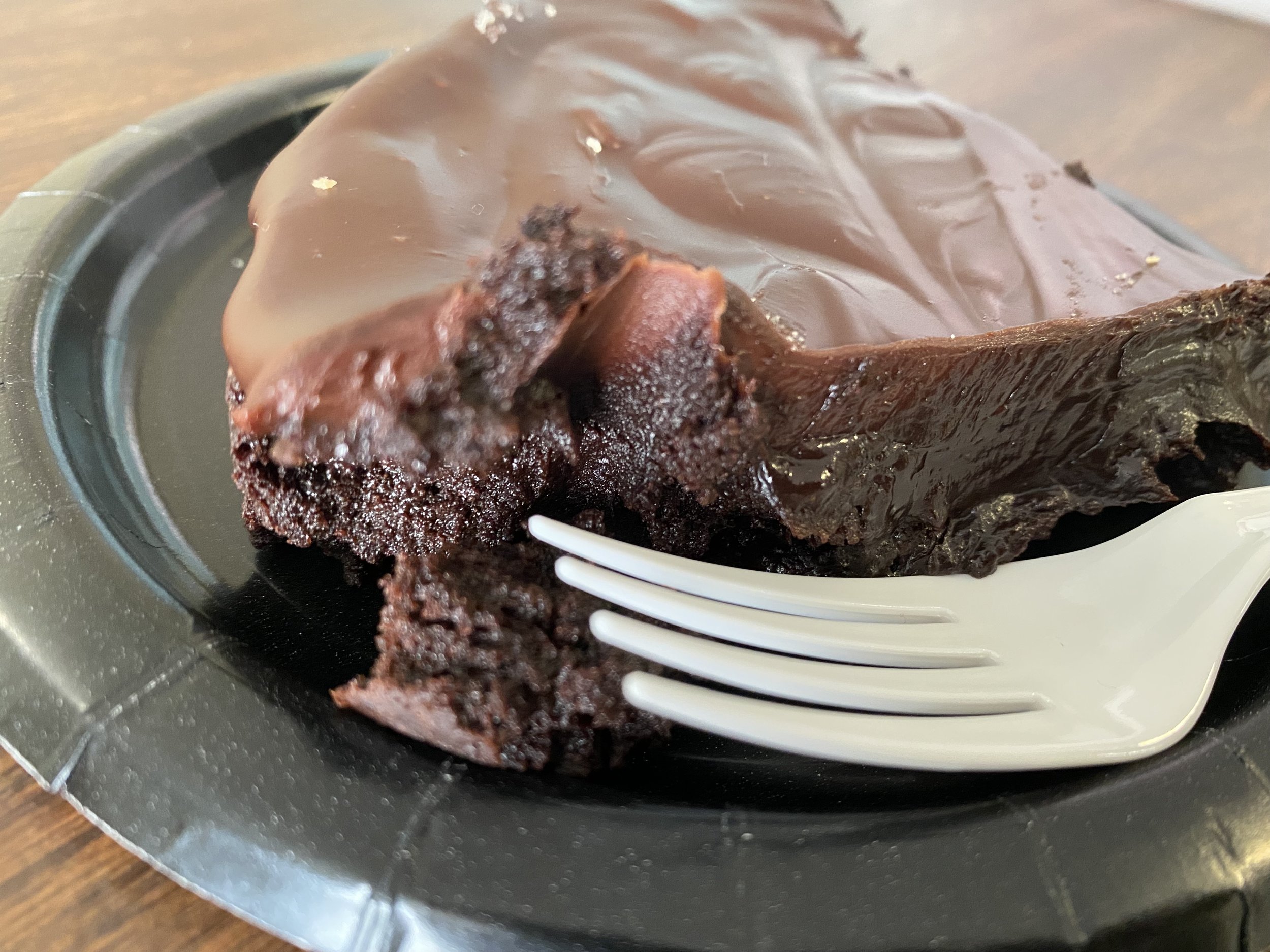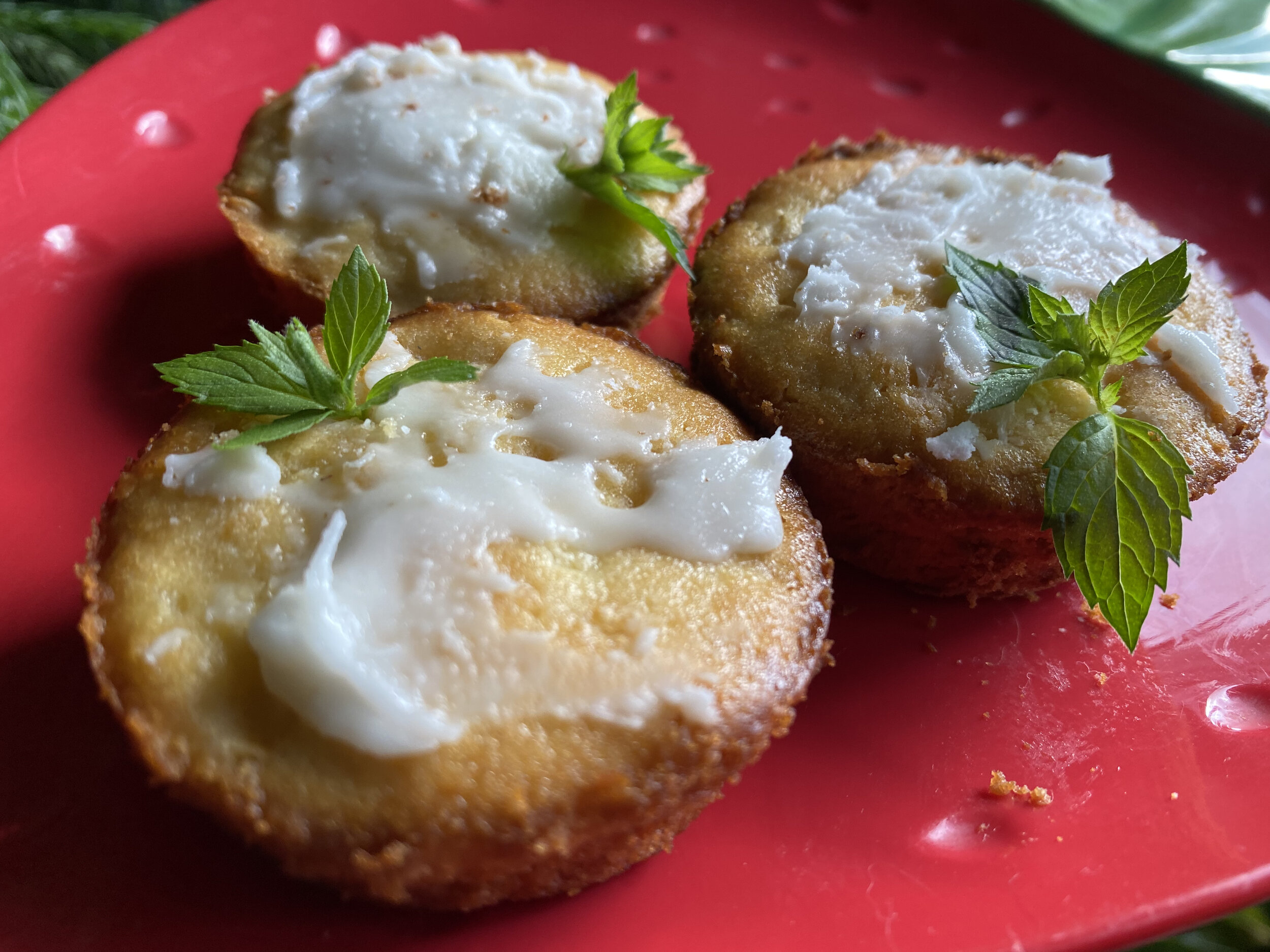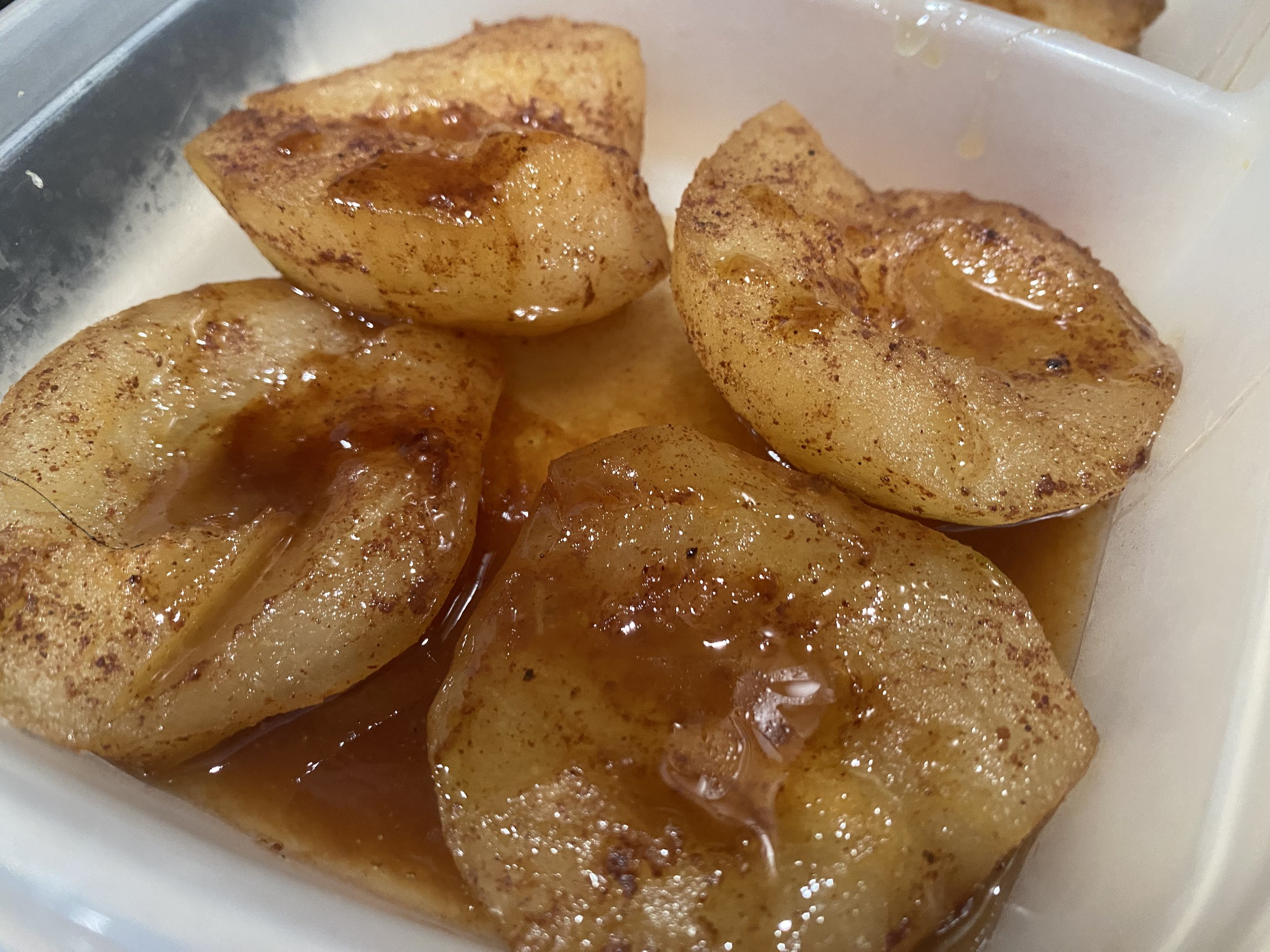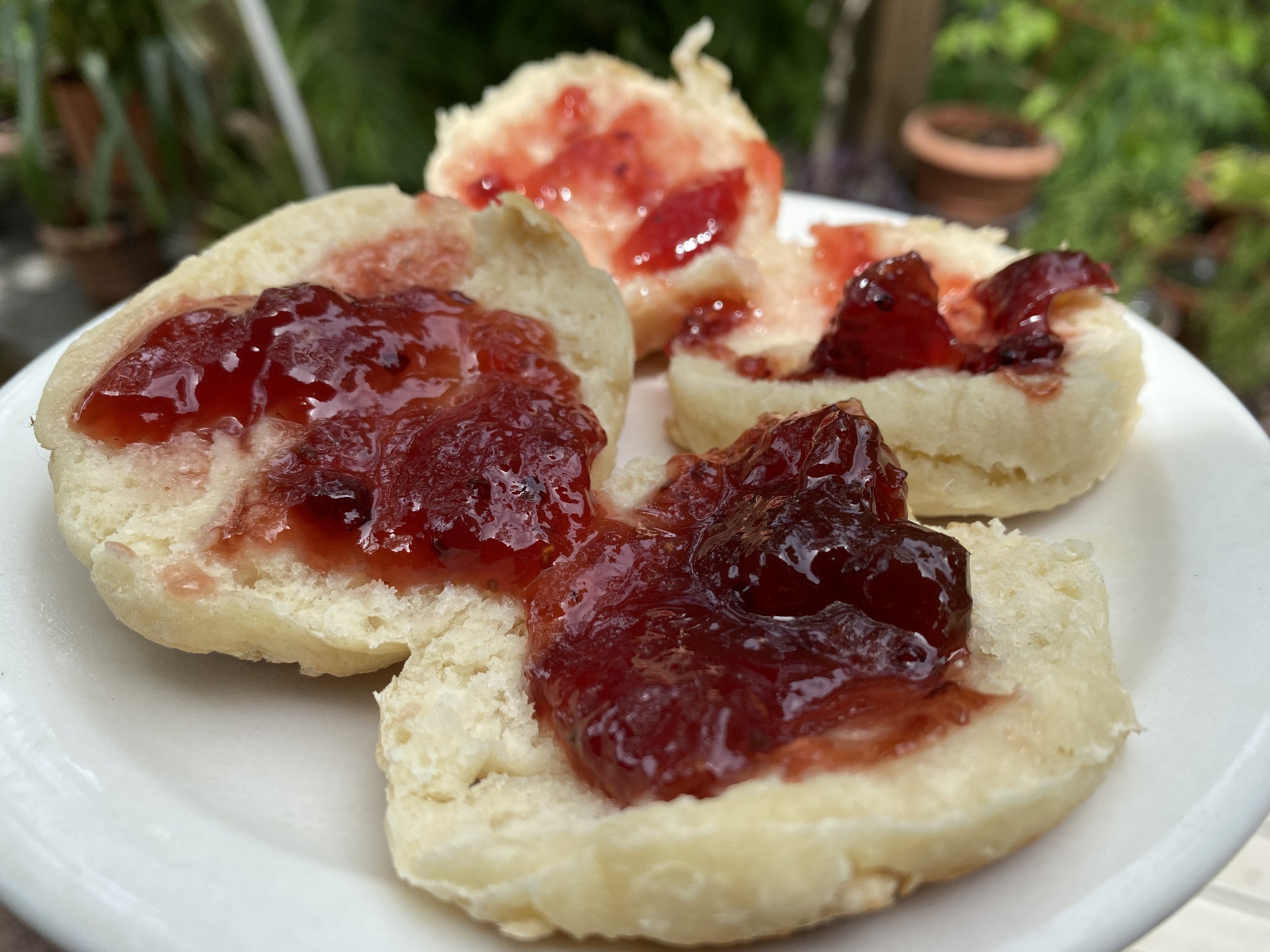Picking Pears
/Lift the pear horizontally until it breaks off the stem. (Photo by Charlotte Ekker Wiggins)
Picking Pears
I wasn’t sure my squirrels would leave me any Bartlett pears this year. For the past few years, they have ransacked my semi-dwarf pear tree growing right off my house deck. I planted it there in 1985 dreaming of reaching over my deck and picking a fresh pear.
It took a good 30 years before the pear tree produced its first pears. It was the same year I added honey bees to my garden although the bees weren’t responsible for the pollination, wasps were. Since then I keep extra birdhouses in my limestone hillside so paper wasps have a safe place to nest. Wasps are excellent fruit pollinators.
I also keep a variety of potted flowers on my deck to encourage pollinators. They don’t help the pear trees but they help nearby potted herbs and vegetables.
My semi-dwarf Bartlett pear tree almost leans over into my deck. (Photo by Charlotte Ekker Wiggins)
My first year of fruit I had more than 300 pears. Since then, I seem to have one good year interspersed with a lean year. In 2012 when we had a terrible drought, the tree gave me one very huge pear - the fruit was close to the size of a small cantaloupe.
According to Stark Brothers, I need to pinch some of the early pears so that the tree will produce fruit every year. I did that this spring, gently removing tiny pear starts so a branch was hosting only one or two pears instead of several trying to grow in one bunch.
Next year I need to remove one of these pears earlier. (Photo by Charlotte Ekker Wiggins)
Late August I start checking my pear tree for fruit. I was pleasantly surprised the squirrels left me a few.
A few Bartlett pears waiting for me to pick them before squirrels get to them. (Photo by Charlotte Ekker Wiggins)
Pears ripen from the inside out. By the time they feel soft on the outside they are deteriorating inside.
The way to select a pear is to press gently on the top where the stem is located. If that area is soft, the pear is ripe.
If the pear is still green, place it inside a brown bag with an apple or banana to capture ethylene gas that will help the pear to ripen. I also leave a couple of pears in my counter fruit basket and check them daily. They usually ripen nicely after a few days.
The extra pears I have I store in the refrigerator until I need them.
When I get too many pears, I share with family and close friends, usually with a little jar of honey.
Enjoying my first homegrown Bartlett pear of the season! (Photo by Charlotte Ekker Wiggins)
Pears are delicious fresh or diced in salads. You can also bake them sprinkled with cinnamon and drizzled with honey, a perfect winter treat.
And the squirrels?
I just keep planting more dwarf pear trees, surely there will be enough to go around!
Charlotte

